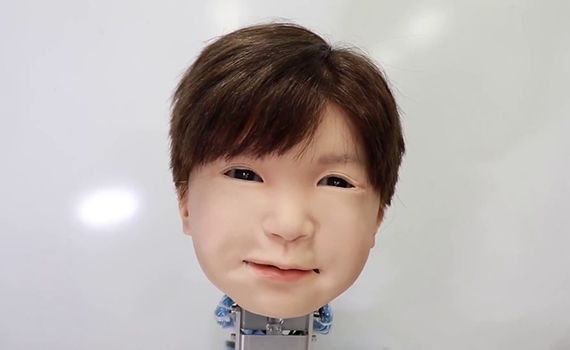NEWS
Japanese scientists made the robot "feel" the pain

The robot-child was equipped with the so-called painful nervous system - and he was able to not only distinguish neat touches from gross ones, but also demonstrate the corresponding reaction.
Engineers from the University of Osaka (Japan) developed new tactile sensors and integrated them into the child-like Affetto robot. This was explained by one of the authors of the technology, Minoru Assad, at the annual meeting of the American Association for the Advancement of Science, which was held in Seattle from February 13 to 16.
Japanese researchers reported Affetto for the first time back in 2011, since then they have not stopped improving it. Previously, scientists were actively engaged in his facial expressions - and not only with simple movements of the eyes, eyebrows and lips. So, Affetto also learned more complex “emotions”: smiling, wrinkling his nose, frowning and rolling his eyes, and in principle he began to look more like a person (although his appearance did not become less frightening).
According to nanonewsnet.ru, Affetto has a realistic skeleton of the face and body covered with artificial skin: sensitive soft material, in contrast to a hard metal surface, provides a more complete interaction of the robot with the outside world. With the help of implanted sensors, Affetto was now able to feel the touch, distinguish gentle, neat from coarse and strong, and also showed response emotions.
The purpose of the experiment is to ensure that the humanoid robot learns to empathize with a person and recognize his feelings, including negative ones. Such skills can, for example, be useful to robots that are designed to help older people.
© All rights reserved. Citing to www.ict.az is necessary upon using news






